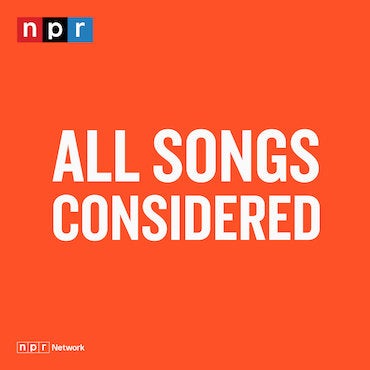Why the Supreme Court decision on affirmative action matters

(Peter Judson for NPR)
The U.S. Supreme Court on Thursday rejected race-conscious admissions in higher education at Harvard University and the University of North Carolina at Chapel Hill, overturning more than 40 years of legal precedent.
The ruling in the two cases hands opponents of affirmative action a major victory. The opinion, written by Chief Justice John Roberts, found that the admissions programs at both universities violated the equal protection clause of the 14th Amendment.
“However well-intentioned” the policies at UNC and Harvard were, Roberts wrote, the universities failed to use them within the confines of the narrow restrictions that previous court rulings had allowed.
Roberts also wrote that schools could still consider an applicant’s discussion of how race affected his or her life, “be it through discrimination, inspiration, or otherwise.” But not, he wrote, through a specific application essay or other means.
“This is a very strident curtailing of the ability to use race-conscious admissions policies,” says Dominique Baker, a professor of education policy at Southern Methodist University. “This is bad. But it’s important to pay attention to the details, because those details are how we think about what institutions can do right now at the moment as they’re gearing up to start working on admissions for the next year.”
In the Harvard case, the court considered whether the school discriminated against Asian American students in the admissions process. With UNC, the court considered whether the school was using race-conscious admissions in an appropriately limited manner. The conservative activist group Students for Fair Admissions (SFFA) was behind both the Harvard and the UNC cases.
The ruling mainly affects a select number of colleges
There are nearly 4,000 colleges and universities in the U.S., and only a small portion – slightly more than 200 – have highly selective admissions, where fewer than 50% of applicants get in. That’s just over 200 schools where the ruling on race-conscious admissions process could make a significant difference.
And yet, despite how few students these policies would actually affect, what happens at these elite institutions matters.
They remain a key gatekeeper to access at high levels of government and industry. As just one example, currently eight of the nine Supreme Court justices attended law school at Harvard or Yale.
Recently, researchers from Georgetown University ran simulations to see what would happen if race was removed from college admissions. They found that a national ban would decrease the ethnic diversity of students at selective colleges, unless there was “a fundamental redesign of the college admissions system,” which would include eliminating legacy and athletic recruitment, among other things.
In the simulations, removing race and relying on different combinations of high school grades, test scores, or social-economic indicators did not yield more ethnically diverse classes.
Zack Mabel, a professor of education and economics at Georgetown and an author on the research, explained the findings like this:
“It boils down to: The more information that you are able to consider about the educational opportunities and disadvantages that an individual has had in their life, the better you as an admissions officer are going to be at understanding who is going to be a qualified applicant.”
Mabel says current admissions criteria reinforce disparities in educational opportunity that exist in the K-12 system, and that research has shown that, at highly selective colleges, “students admitted with lower grades and scores are just as likely to succeed as the rest of their classmates.”
This echoes previous research conducted in several states that have banned race-conscious admissions from ballot measures. Those state-wide bans include Michigan since 2006, California since 1996 (and reaffirmed in 2020), and Washington since 1998 (and reaffirmed in 2019).
Broader implications throughout higher education
Experts say the court’s new decision could have implications beyond just admissions.
“We have to think beyond just the who-gets-in and who-gets-to-enroll piece,” says Baker, at Southern Methodist University. The ruling could affect financial aid decisions, including targeted scholarships and efforts by campuses to create communities of students from diverse backgrounds.
She wonders, for example, whether a program designed to increase the number of Black doctors – with support to complete the pre-med curriculum and get into medical school – will now be challenged.
Mitchell Chang, who studies diversity in education at UCLA, says that after the state-wide bans went into effect in Michigan, California, and Washington, modifications to what was once more targeted “race-conscious scholarships, race-conscious programming, race-conscious recruitment,” followed.
Today’s ruling, he says, “may have a much broader sweep, in fact, than just with admissions.”
OiYan Poon, a visiting education professor at the University of Maryland, College Park, points to early court filings from the plaintiffs in the Harvard case, arguing to end “any use of race or ethnicity in the educational setting” – not just in admissions.
But Liliana Garces, an professor of education at the University of Texas at Austin, maintains that today’s opinion is limited to race in college admissions – and nothing else. “The only legal issue that was before the court was the consideration of race in admissions.”
She says it’s now up to universities to implement the ruling in their practices and policies. But, she believes this decision does not explicitly prohibit race-conscious decisions in other areas, such as financial aid. “It’ll be important for institutions to hold their ground and be able to engage in those other practices that are absolutely foundational to their mission.”
Baker agrees: “We want to make sure that we don’t overstate what the legal contours are, because that might create a chilling effect where institutions restrict themselves further than the legal limits.” She’s especially interested in the line in Justice Roberts’ majority opinion, about how schools can still consider the way race impacted an applicant’s life.
“That tells me that there are some pathways forward,” Baker says. “But are those pathways forward the most effective ways of trying to achieve more racial equity within college admissions? No.”
Colleges have used other ways to diversify student bodies – but they aren’t always as effective
Using race in admissions isn’t the only way states and colleges have tried to diversify their incoming classes.
After California banned race-conscious admissions in 1996, the proportions of Black and Latino students at UCLA, one of the most highly selective schools in the state’s system, fell drastically. By 2006, a decade later, only 96 Black students enrolled in a freshman class of nearly 5,000. They became known as the “Infamous 96.”
The University of California responded to those numbers by recrafting its admissions policies to take a more “holistic” approach, considering several factors including whether students were the first in their family to go to college, what high school they went to, and their family’s income. The university has spent more than 20 years, and hundreds of millions of dollars in new programs and scholarships, in efforts to restore that level of diversity.
Other ideas for promoting campus diversity include admitting a percentage of the state’s high school students, like the University of Texas at Austin, which automatically admits Texas students in the top 6% of their high school graduating class. Lotteries have also been proposed, where eligible students with high qualifications would be randomly selected for acceptance.
But so far, researchers say, none of the alternatives have been as effective as considering race.
“Nothing is as good at helping to enroll a more racially equitable class than using race. Nothing comes close to it,” says Baker. “There are other tools; other ideas. But if race is not taken into consideration, those different types of techniques and tools do not replicate what race-conscious admissions policies do.”
What happens next
This opinion comes less than a decade since the last time the high court ruled on affirmative action. In Fisher v. University of Texas in 2016, the court ruled that colleges could consider race in admissions.
The two cases the court ruled on today are Students for Fair Admission v. Harvard and Students for Fair Admission v. University of North Carolina.
While very similar, the cases represent two very different admissions environments: UNC is a state school that highly favors in-state students (it’s only allowed to admit 18% of first-year students from out of state), while Harvard is a highly selective private school that admits fewer than 5% of all applicants (that’s just under 2,000 students this fall).
In amicus briefs filed with the Supreme Court ahead of the arguments in these two cases, the University of Michigan and the University of California, Berkeley, both admitted that their efforts to meet their diversity goals, without using race, were falling short.
But not every school says it is struggling to achieve diversity without race-conscious admissions.
The attorney general of Oklahoma filed a brief on behalf of several states in support of the plaintiffs in the two cases: “The University of Oklahoma, for example, remains just as diverse today (if not more so) than it was when Oklahoma banned affirmative action in 2012.” The university’s main campus in Norman currently has a U.S. undergraduate student population that is about 60% white and 5% black.
In the absence of race in the admissions process, Kelly Slay, an assistant professor at Vanderbilt University who studies affirmative action, expects to see colleges increase targeted recruitment, expand financial aid including free-college programs, and go test-optional, in an effort to maintain their ethnic and racial diversity.
But, she says, “we don’t have anything that works as effectively at producing and enhancing racial diversity as race-conscious affirmative action. We have over 20 years of data and research on that.”
9(MDAzMzI1ODY3MDEyMzkzOTE3NjIxNDg3MQ001))




